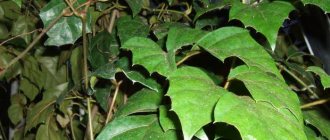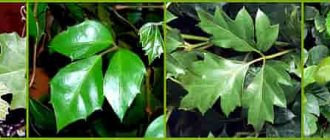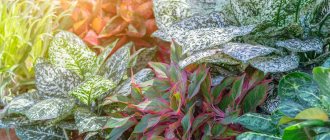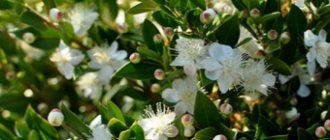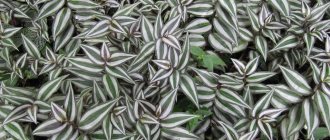Lush landscaping of premises is an original solution for creating everyday comfort. Experienced designers often use house grapes, a climbing indoor plant. It wonderfully purifies the air, which is good for health. In just a few years, the culture can completely envelop windows, walls and furniture elements. Lush greenery exudes a pleasant tart aroma, turning the room into a miniature natural landscape. Let's take a closer look at this wonderful plant.
general information
Cissus is one of the representatives of perennial vines.
As the shoots grow, they reach 3.5 m in length.
With age, the base of the plant becomes lignified, loses its former flexibility and is enveloped in gray bark, which soon begins to crack and peel off.
The stems have characteristic internodes containing tendrils and petiolate leaves. Often the ends of the antennae form disc-shaped suckers, necessary for clinging to adjacent surfaces.
The light green petiolate leaves are lobed, palmately compound, or entire. They are fastened one after another. The root system is compact.
Reference! Flowering when grown indoors is very rare, but the plant benefits from beautiful decorative foliage.
During the flowering period, small flowers of greenish color form clusters; if pollination occurs, black or red fruits containing seeds will appear in the future.
Characteristics of grapes
Indoor grapes can survive for a long time without watering. It is resistant to low temperatures.
Cissus does not have fruits, but is distinguished by its rapid growth, abundance of foliage and strong tendrils. It has a thin stem that resembles a vine. As it grows, new thin shoots appear, thanks to which the plant is flexible. The antennae are spiral shaped. They easily cling to special supports.
The leaves are similar in shape to birch, but denser. Thanks to this feature, the plant received a second name - “Birch”.
Indoor grapes have small flowers collected in umbrellas. It rarely blooms.
Cissus: types and varieties
The genus has more than 350 species. The most popular cissus indoor plants include the following representatives:
- Cissus rhombifolia (or cissus rhombifolia). A perennial vine with thin and flexible shoots.
The diamond-shaped leaves are arranged alternately on small petioles. Racemose inflorescences are formed from small green flowers. After pollination, edible red berries appear during the ripening season. - Antarctic cissus (or arctic cissus). Evergreen vine with long shoots. The leaves are ovoid or oval in shape and have characteristic teeth along the edges.
The color is dark green on the front side, slightly lighter with slight pubescence along the veins on the back. The internode contains a leaf and, oppositely located, tendrils. The inflorescence is formed from small yellow-green flowers. - Cissus quadrangular. Representative of medicinal plants. The shoots are distinguished by their original tetrahedral shape up to 1-1.5 cm in diameter.
Small leaves, divided into three lobes, quickly fall off. The plant develops quite slowly in any conditions. - Cissus Helen Danica. A popular decorative variety of rhomboid cissus.
Has bright carved leaves. - Cissus variegated. It is popular due to the original color of the leaves.
The front side is dark green with silver and burgundy-brown markings, the back surface is dark pink. On the eve of winter, the plant sheds most of its crown; with the onset of the warm season, the decorative foliage is restored. - Cissus rotundifolia. Liana with clinging stems.
The green leaves are characterized by a waxy coating and rounded shapes with fine teeth along the edges. - Cissus striata (striated). It is distinguished by the smallest three-lobed or five-lobed leaves in the genus.
The stems of the plant can grow up to 10 m. The shoots are characterized by a reddish tint. The flowers are light green in color; after pollination, black fruits ripen.
Cissus: can you keep it in the house - useful properties and signs
Thanks to the high bacterial and phytoncidal activity of the indoor flower, the atmosphere in the home is cleansed. Microcomponents released by cissus kill bacteria that cause allergic diseases and gastrointestinal disorders.
Decorative vine perfectly humidifies the air in the room and absorbs excess dust.
Helps get rid of formaldehyde - fumes from building materials, which often cause headaches, provoke nausea, and irritate the respiratory system.
Several pots of plants in the room increase vitality and reduce fatigue.
Popular signs and superstitions associate the cissus flower, like most lianas, with a muzhigon flower, that is, the flower is capable of surviving a spouse from home. Whether or not to keep hanging plants at home is up to everyone to decide for themselves; most flower growers do not pay attention to these myths.
Indoor air
Cissus is a houseplant, an ivy-shaped grape from the tropics and subtropics, and there, as you know, the air is quite humid, and it should be the same in the room where the pots with this flower are located. Multi-colored cissus is especially demanding of high levels of air humidity. Therefore, it needs to be sprayed frequently. This is especially true in the winter. Flower growers say that in the winter months, multi-colored cissus should be sprayed at least twice a day. In summer, the procedure can be shortened, but you cannot abandon it completely. Indoor grapes should also wipe the leaves with a damp cloth.
How to care
Particularly popular among flower growers are diamond-shaped and Antarctic cissus, which are distinguished by their unpretentiousness, growth rate, and decorativeness.
Of course, the vine will take root in almost any room, but in order for the plant to always be pleasing to the eye, to fully develop and not suddenly die, it is important to adhere to the criteria for proper care.
Priming
Homemade grapes are unpretentious to soil, which can be purchased at any specialized store.
It is always possible to prepare the soil yourself by mixing leaf humus with turf and garden soil, peat and coarse sand in a ratio of 2/1/1/1/0.5.
Temperature and lighting
Popular varieties of cissus are adapted to a fairly wide temperature range - 10-25°C. Particularly hardy varieties are able to withstand temperature drops of up to 5°C, but only for a short time.
Multi-colored cissus is more whimsical in this aspect; the favorable temperature range is 18-25°C.
It is a mistake to believe that the vine does not tolerate drafts. This is a wrong opinion.
Cissus is only afraid of sharp gusts of cold wind, after which the flower can shed its crown. If the weather outside permits, pots with plants can be temporarily placed, for example, on a balcony or veranda.
It is best to place indoor cissus flowers near western or eastern windows. Direct rays of the sun are detrimental to the vine and can cause burns on the leaves.
If the flower is completely protected from the sun, it is important to take care of artificial light sources - high-power phytolamps, which must be in operating mode for at least 16 hours a day.
Watering and fertilizing
Cissus develops rapidly, while quickly depleting the soil. Therefore, from April until the end of summer, it is advisable to fertilize the vine twice a month; in other cases, monthly feeding is sufficient. To do this, you can take any composition for indoor flowers.
Given the fact that the vine actively releases moisture, it needs abundant watering both in summer and winter.
The intensity of irrigation increases with the onset of spring and decreases in autumn.
It is recommended to adjust watering individually, since the plant reacts poorly to both excess and lack of water.
The first case is often accompanied by root rot, while in the second case drying of the stem is observed.
Trimming
The liana needs periodic pruning to maintain its decorative effect. Long and old shoots, on which the foliage cover has noticeably decreased, can be pruned.
The branch is cut by about half or a little more to allow the formation of lateral branches.
Transfer
Mature vines are usually replanted once every 2-3 years, young ones - once a year.
Favorable period is March.
The transplant is carried out in several stages:
- the cissus is removed from the old container, leaving the soil on the roots;
- fresh soil in the required quantity is poured into a new pot and the plant is placed there;
- If root rot develops due to excess moisture, the soil is completely changed.
This process is called transshipment. You should not use bulk pots for replanting, as the flower takes root and develops better in cramped containers.
Reproduction
The easiest way to propagate decorative grapes from cuttings at home.
The cut cuttings should have several leaves. Until the first roots appear, it is placed in water, then transplanted into a pot with soil familiar to an adult plant.
This video contains a detailed story about growing, caring for, feeding and propagating cissus:
Dividing the bush is mainly done during the spring replanting season. An adult vine is removed from the old container and divided into several parts, each of which should have an already formed shoot and a sufficiently developed rhizome. The sorted bushes are planted in different pots.
Transfer
Indoor grapes grow very quickly. This becomes the reason for its annual transplant. It is produced in early spring. The plant is transplanted into a larger pot and the old soil is replaced with fresh one. The soil will include leaf soil, turf, peat, humus and sand. The ratio of parts is the same - one part of each component.
After transplantation, the plant is pruned.
All upper shoots are shortened. This will help the grapes to grow faster and form side shoots, which is important for bushiness. For 4-5 years, the plant is replanted every year. Afterwards, you can replant once every two years. It is always held in the spring.
As soon as the grapes are transplanted, apply a fertilizer containing nitrogen compounds. This will help the plant quickly adapt to the new pot and get used to the fresh substrate. Transplantation is another important care requirement. Without it, the plant will die very quickly.
Possible problems and illnesses
Almost all cissus diseases are the result of improper care:
- the leaf cover loses its former color - the vine needs mineral fertilizer;
- the leaves bend in one direction or another - the plant is not satisfied with air humidity, it is recommended to place a container of water next to the cissus and regularly spray the crown;
- spots on the lower leaves, wrinkling - insufficient watering;
- drying of shoots, premature loss of foliage - excess moisture;
- the tips of the leaves dry out - the flower requires more air humidity, in winter the cause may be frostbite;
- brown spots on the leaves - lack of phosphorus nutrition, it is necessary to select the appropriate fertilizer;
- the foliage turns pale - too much lighting;
- yellowing of the crown - lack of watering;
- falling leaves - sharp draft, hypothermia;
- the lower part of the stem becomes bare - the plant needs additional lighting.
Rules of care
Watering and fertilizing
Proper planting and care can turn a girl's grape into a bonsai
- Watering is carried out at least once a week. To maintain a sufficient level of humidity, it is better to cover the soil in the pot with a loose layer of pine needles or tree bark . Do not be overzealous when carrying out this work, otherwise the plant will be deprived of air exchange and mold will appear on the surface.
- Fertilizing is applied in the spring using a solution of 50 grams of nitroammophoska. During the active growing season, it is better to support the plant with organic fertilizers.
Every year, replace part of the soil in the tub with humus and manure. The procedure is best carried out in early spring.
- Don’t forget to carefully loosen the soil, giving the roots back the opportunity to “breathe.”
- In order for the grapes to form the required shape, the young plant is tied to wooden pegs installed in the soil . As the crown forms, it is necessary to pull rope supports that will allow the tendrils to fasten and climb up. In addition, do not forget to periodically trim limp and dry branches.
Pest Control
The grapes are quite resistant to pests and diseases. Most often you have to fight such a scourge as aphids. In this situation, I recommend starting by washing the leaves with a solution of laundry soap or alcohol.
Pests
The most dangerous enemies of indoor grapes are mealybugs, aphids, and scale insects. If the insect population is insignificant, it is enough to resort to mechanical removal by washing the cissus with an infusion of garlic, orange or tobacco. In case of a large number of pests, the vine must be treated with insecticides.
Cissus is a plant that will not only complement the interior, but also purify the air in the living room.
The plant is absolutely unpretentious in care and can grow in almost any indoor conditions.
Cissus is a long-term representative of the Vinogradov family. It is popular among gardeners due to its unpretentiousness, rapid development, and decorative leaves.
Features of watering
The period of active growth for cissus occurs in spring and summer, so special attention should be paid to watering at this time. Indoor grapes have a large leaf mass that requires a lot of moisture. Therefore, watering should be plentiful. But you should be careful in this matter, since the plant can be flooded, and then its roots will begin to rot and the flower will simply die. It is also not recommended to overdry the soil. You need to monitor the condition of the top layer of soil; if you find that it has dried out, then you can safely water the flower. When cold weather comes, the amount of watering is greatly reduced. Especially in winter, cissus needs little moisture, since its growth is slow. Experienced gardeners recommend using automatic watering for indoor plants. This is a convenient way to water the plant on time and not waste your own time on it.
